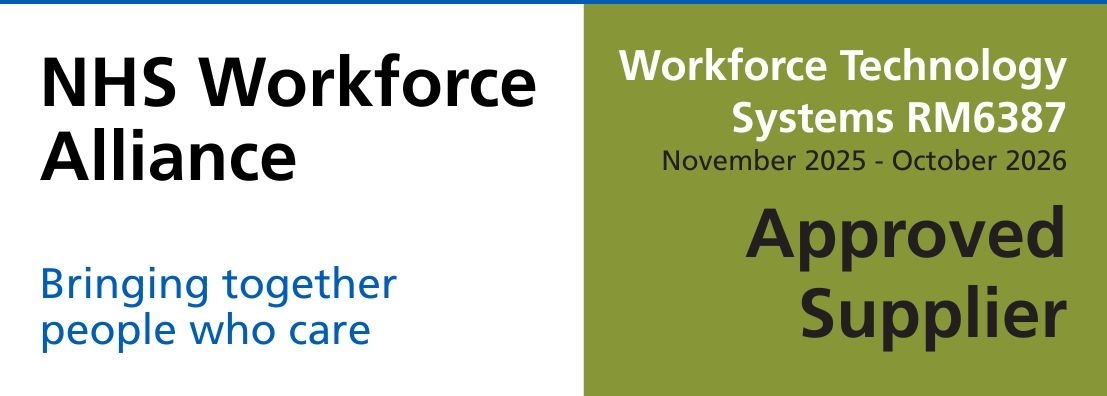
Blog by Flexzo
NHS Rota Gaps: Why Quick Fixes Aren’t Working
Walk through any NHS hospital and you’ll hear the same concerns from staff. Nurses describe the constant, overwhelming stress of knowing they don’t have enough colleagues to run wards safely – the anxiety that follows them home after shifts, the sleepless nights worrying about patients they couldn’t properly attend to, and the moral distress of providing care they know falls below their professional standards. Meanwhile, rota gaps are becoming more common, more difficult to fill, and increasingly disruptive to patient care.
Despite numerous attempts to address these staffing shortages with short-term solutions, the problem continues to grow. The healthcare system needs a fundamental rethink of how we approach staffing rather than continuing to apply sticking plasters to a worsening situation.
The Reality of NHS Staffing Today
Rota gaps have transformed from an occasional inconvenience into a systemic crisis affecting healthcare delivery across the UK. Recent figures reveal vacancy rates reaching 15-20% in specialties like emergency medicine, psychiatry, and surgical areas. This staffing crisis directly impacts patient waiting times, causes procedure delays, and forces appointment cancellations that affect thousands of patients daily.
The consequences for healthcare professionals are equally concerning. Existing staff must constantly cover additional shifts, which compromises their wellbeing and the quality of care they can provide. The situation has created a dangerous cycle. Overworked staff become more likely to reduce hours or leave altogether, further worsening the staffing crisis they were trying to address.
Why Our Current Approaches Are Failing
The traditional methods the NHS relies on to fill rota gaps are becoming increasingly ineffective as the fundamental nature of healthcare work evolves. Each approach comes with limitations that prevent it from solving the underlying problems.
The Agency Trap
For years, agency staffing has been the default solution for urgent rota gaps. It provides immediate relief but creates significant long-term problems. Trusts across the UK collectively spend hundreds of millions of pounds annually on agency premiums that could otherwise fund permanent improvements. A single agency shift often costs 50-100% more than the same shift worked by a permanent staff member.
Beyond the financial impact, agency workers frequently lack familiarity with local systems, protocols, and teams. This reduces efficiency and can impact patient care, particularly in complex cases. The fluctuating availability of agency staff also makes this an unreliable solution for addressing systemic staffing issues.
Internal Bank Limitations
Many Trusts have established internal locum banks to reduce agency spending while maintaining flexibility. These banks typically only include staff already working at the Trust – they don’t actually increase the available workforce but merely redistribute existing staff’s time across more shifts.
The isolated nature of most Trust banks creates significant inefficiencies. One Trust might struggle with vacancies while another nearby organisation has available staff who could help if the systems were connected. Administrative processes remain time-consuming, creating barriers that prevent efficient deployment of the workforce we already have.
The Overtime Dilemma
Perhaps the most common but least sustainable solution involves asking existing staff to work additional shifts. Healthcare professionals already work under significant pressure and face increased risk of burnout when regularly taking on extra shifts. The system has come to depend on this extra work rather than treat it as exceptional.
Most concerning is the impact on care quality. Tired staff working more hours than recommended are more likely to make errors and take longer to complete tasks. They also have less capacity for the emotional aspects of patient care that make such a difference to healthcare outcomes.
The Deeper Issues We Must Address
To understand why quick fixes continue to fail, we need to look beyond symptoms to the underlying structural issues.
Workforce Planning Failures
The NHS continues to struggle with a fundamental mismatch between workforce supply and demand. Training programmes haven’t expanded quickly enough to meet growing healthcare needs. Brexit has compounded these challenges by reducing the flow of EU healthcare professionals into the system.
Geographical distribution of the workforce creates additional complications. Some regions struggle significantly more than others to attract and retain staff, creating healthcare deserts in certain communities while other areas maintain better staffing levels.
Evolving Work Expectations
The expectations of healthcare professionals have fundamentally changed over the past decade. Younger doctors, nurses, and allied health professionals increasingly prioritise work-life balance. Many prefer part-time or flexible working arrangements over traditional full-time roles.
Career variety has become increasingly important. More professionals seek varied experience across different settings rather than committing to a single employer or role for extended periods. The intense pressure experienced during the COVID pandemic has accelerated these trends.
System Inefficiencies
The processes for managing healthcare staffing often rely on outdated systems that create unnecessary delays. Many Trusts still use manual processes involving phone calls, emails, and spreadsheets to identify and contact potential staff for vacant shifts.
Compliance requirements remain essential for patient safety. However, they frequently create duplication of effort when professionals work across multiple sites. Communication breakdowns between different parts of the system create additional problems.
Moving Beyond Temporary Solutions
Addressing rota gaps effectively requires abandoning the quick-fix mentality. We need to develop comprehensive approaches that tackle the systemic issues creating staffing shortages.
Collaborative Workforce Models
The traditional model where each Trust operates as an independent entity creates inefficiencies. Forward-thinking organisations have begun developing shared staff banks across multiple Trusts. This significantly increases the pool of available professionals while reducing administrative duplication.
Standardising compliance processes across organisations would allow staff to move between sites without repeatedly completing similar paperwork. Regional approaches to workforce planning could better match training places and recruitment efforts to local needs.
Technology Solutions
Modern technology offers powerful tools to make healthcare staffing more efficient and responsive. Digital platforms that match available staff to appropriate vacancies in real-time can transform the speed and accuracy of filling rota gaps.
Automated compliance tracking ensures that necessary checks remain current without creating unnecessary administrative hurdles. Data analytics capabilities help predict likely gaps before they occur, allowing for more proactive staffing approaches.
Addressing Fundamental Causes
Alongside operational improvements, the NHS must address the fundamental causes of staffing shortages. Career development pathways that support flexible working while providing clear progression opportunities could help retain experienced staff.
Improved working conditions would reduce burnout and staff turnover. Training programmes need to adapt to changing healthcare needs and workforce expectations.
Collaborative Staff Bank Approach
As part of the solution to chronic rota gaps, collaborative staff banks represent one promising innovation being adopted by forward-thinking NHS Trusts. Flexzo Ai is an example of this approach, connecting Trusts with healthcare professionals through modern technology.
The platform addresses several of the challenges mentioned above: reducing administrative duplication through centralised compliance management, breaking down barriers between Trusts to increase workforce mobility, and offering healthcare professionals the flexibility many now prioritize in their careers.
By creating a shared pool of pre-approved professionals across organisations, this model helps make better use of the existing workforce while reducing the financial burden of traditional agency staffing.
Get in Touch
If your organisation struggles with persistent rota gaps and seeks more sustainable solutions, our team of healthcare staffing experts understands the complex challenges you face. We can show you how Flexzo Ai’s collaborative approach aligns with the direction NHS workforce planning needs to take to address these systemic issues.
Explore our platform through a free demonstration or contact us to discuss your specific situation and staffing challenges. We remain committed to supporting NHS organisations in building sustainable staffing models that can finally address the chronic rota gaps affecting healthcare delivery across the UK.






